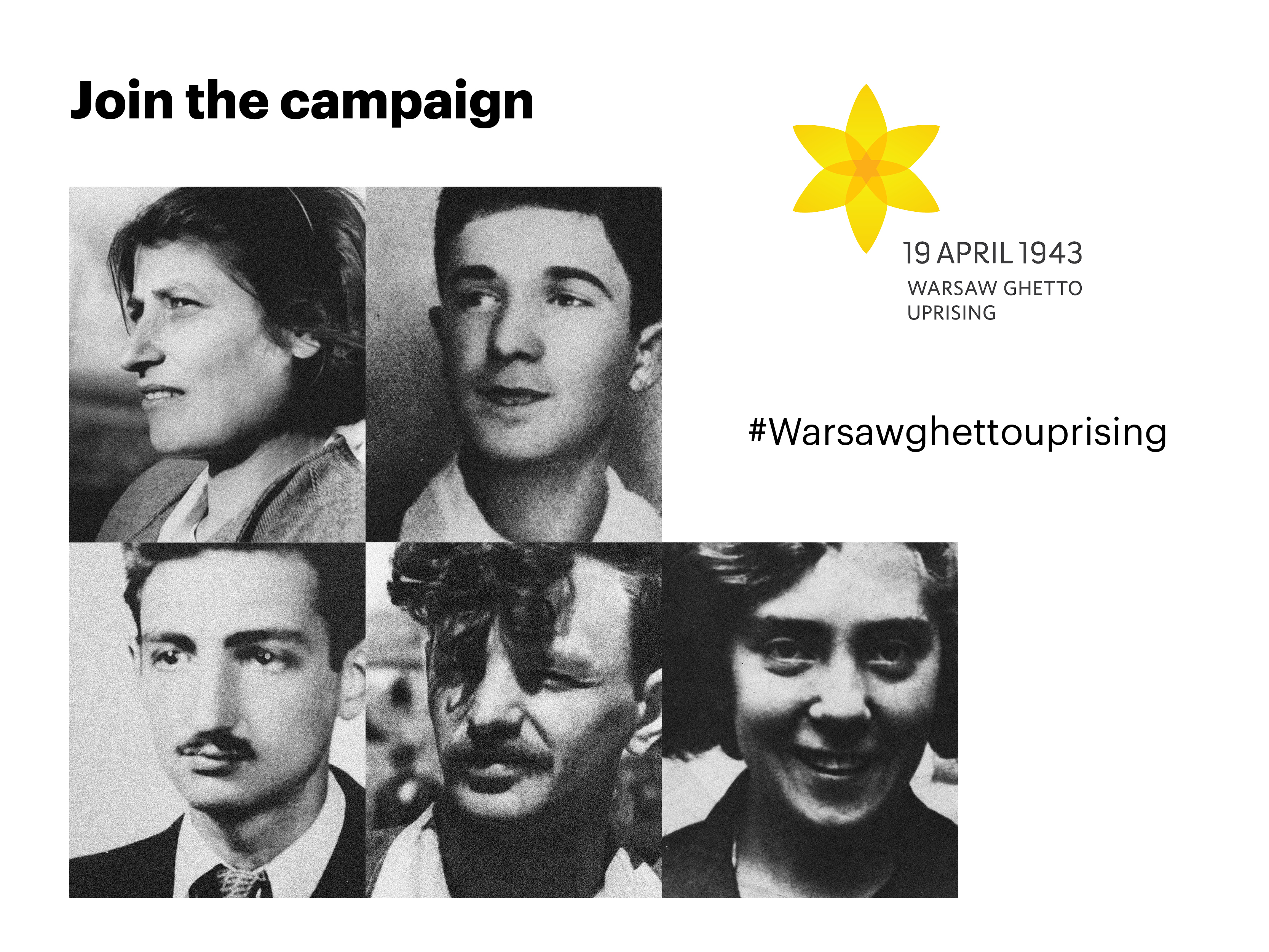ENRS joins the Warsaw Ghetto Uprising Campaign.
Each year on 19 April, the world marks anniversary of the Warsaw Ghetto Uprising – the first large-scale metropolitan uprising in Nazi-occupied Europe. The Uprising became an everlasting symbol of the resistance of Polish Jews against the Holocaust. On this occasion, POLIN Museum of the History of the Polish Jews announced a campaign , which the ENRS is going to become a part of.
The topic of the Warsaw Ghetto Uprising has recurred more than once in ENRS initiatives:
▪️ Sound in the Silence 2018. In 2018, the Warsaw Ghetto Uprising was one of the leading themes of Sound in the Silence project. Four selected groups from four European countries spent eight days visiting Warsaw in order to explore different dimensions of resistance, as well as the history of the two Warsaw uprisings – Warsaw Ghetto Uprising of 1943 and Warsaw Uprising of 1944. Together with artists representing different disciplines, they explored the concept of fight for identity and dignity.
▪️ A webinar on Jewish resistance to the Holocaust as exemplified by the Warsaw Ghetto Uprising was organized in cooperation with the Jewish Historical Institute. During the webinar, Justyna Majewska, PhD (Jewish Historical Institute in Warsaw) and Daniela Ozacky-Stern, PhD (Bar-Ilan University, Western Galilee College) presented the primary sources (photos, documents, maps, poems), teaching resources (infographics, lesson plans) and guidelines on how to address this topic in the classroom, that could be useful in the preparation of a lesson about Jewish resistance to the Holocaust.
▪️ A detailed calendar of the Uprising is available on our platform Hi-story lessons. On the platform you will also find the material on the resistance movement, in particular an article on “JEWS IN THE FACE OF THE HOLOCAUST: attitudes and survival strategies” by dr. Martyna Grądzka-Rejak and prof. Piotr Trojański, and a guide to organising “Commemorations of the Victims of the Holocaust” by Dominika Majuk.
▪️ Between Life and Death exhibition. The fate of Elżunia (Elżbieta Ficowska), a six-month child taken out of the Warsaw Ghetto, is one of the twelve unique stories of rescue shown on our exhibition, now having its tour in Slovakia and Kaunas. These are just a few examples of the commemoration of this historical moment.
How can you get involved in the commemoration of the Warsaw Ghetto Uprising?
Even if you cannot be here in Warsaw for the official commemoration, there are several ways to commemorate.
- The simplest one is to make a daffodil, take a selfie for your social media profiles and use the hashtags: #RememberingTogether, #WarsawGhettoUprising.
Download the daffodil pattern here: daffodil pattern
Download daffodil instructions here: daffodil instructions
- Watch "There Was No Hope" , a film about the Warsaw Ghetto Uprising produced by POLIN Museum. Please adjust the closed captions in YouTube for English subtitles.
- Read a short graphic novel about Marek Edelman .
- Explore the Holocaust gallery of POLIN Museum’s Core Exhibition.
Read more about the Remembrance Campaign at the organiser’s website: What is the Warsaw Ghetto Uprising Campaign?
